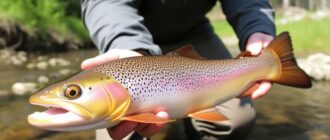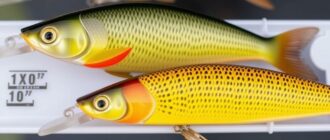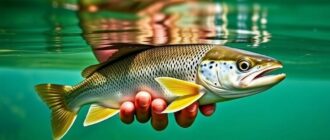Welcome. If you love the rush of the rod bending, the heartbeat-quickening run of a big fish, and the satisfying relief when a thrilled angler finally brings a prize to the net, you’ve come to the right place. “Das 1×1 des Drillens” is a phrase that captures the basic grammar of fighting a fish — the fundamentals that every angler should master to consistently land big catches. In this long, practical, and friendly guide I’ll walk you through everything from gear choices and drag settings to fighting techniques, landing tools, species-specific tricks, and catch-and-release best practices. Whether you’re a weekend angler stepping up to bigger water or an experienced fisher looking to tighten your game, this piece is written to be accessible, conversational, and deeply useful.
Throughout the article I’ll use plain language, real-world examples, and step-by-step instructions. You’ll find checklists, a practical table of recommendations, lists of common mistakes and how to fix them, and training exercises you can practice safely on shore. This guide doesn’t promise magic — big fish are unpredictable and each fight is unique — but it does offer a systematic approach to increase your odds, reduce break-offs, protect the fish when releasing, and keep yourself safe. Let’s start by describing what “drillen” really means and why mastering it transforms an angler’s success rate.
What “drillen” means — the art and science of playing a fish
“Drillen” is a German term used among anglers to describe the process of playing a hooked fish from the moment it takes the bait until it is landed or lost. In English, you might hear “playing,” “fighting,” or simply “the drill.” It’s not just brute strength — drillen is about rhythm, gear synergy, patience, and knowing when to give and when to pressure. That makes it part art and part science.
Think of it this way: when a fish takes the bait, a conversation starts. You and the fish communicate through your line and rod. Your job as the angler is to guide that conversation toward a calm outcome — either a successful landing or a minimized injury for a safe release. That requires reading fish behavior, understanding gear limitations, and executing appropriate techniques. The more calibrated your responses, the fewer surprises you’ll face.
Drillen also matters because landing a big fish safely is not only rewarding, it’s a conservation issue. Poor technique can lead to snapped lines, lost hooks in mouths, torn leaders, or fish suffering to the point they don’t survive release. Learning proper drillen reduces fish mortality and protects the fishery we all enjoy. So this guide will give you tools both to win the fight and to honor the fish.
The anatomy of a fight — predictable stages and what to expect
Big fights tend to have similar phases. Recognizing these phases helps you respond correctly. Below are classic stages most anglers will encounter:
- Immediate explosion: Many fish bolt when hooked. They surge to create distance and test the anchor of your hook. This phase is furious, short, and often accompanied by powerful head shakes or jumps.
- Long runs: Pelagic species and strong freshwater fish will make sustained runs to try to peel line from your spool. Managing the drag during a run is crucial — too loose and the fish gets too far; too tight and the line or rod can fail.
- Shallowing and surges: After a run, fish often come closer but remain sullen — darting or thrashing near structure where they might cut you off. Patience and precise pressure are needed.
- Fatigue and controlled drift: As the fight wears on the fish tires. Your goal is to keep it moving toward you without letting it regain energy.
- The final approach: This is where nets, gaffs, or careful hand-grabs come into play. It’s also where mistakes often happen — improper net angles or rushing can result in lost fish.
Each stage calls for a change in technique. For instance, during a long run you should let the fish take line while maintaining a steady, appropriate drag. During the final approach you should switch to slower, controlled lifts and use a net with the right angle and positioning. Throughout, maintain awareness of your surroundings: boat position, shore obstacles, and bystanders who might trip the line or spook the fish.
The angler’s role during a fight
Your physical role is deceptively simple: maintain pressure, steer the fish away from danger, and save your line and tackle. But your mental tasks are equally important: interpret what the fish is doing, decide when to give line and when to take it back, and remain calm when the fish does something unexpected. Big fish will test nerves. A composed angler with a good plan will outlast a panicked opponent nearly every time.
Footwork and body positioning matter. Stand solid, use your legs and hips when lifting, and adjust rod angle to change the fish’s direction. Don’t rely solely on arm strength; that quickly causes fatigue and shaking, which can translate into frantic responses at the critical moment. Breathing, pacing, and conserving energy are undervalued but essential aspects of drillen.
Essential gear for successful drillen
You can’t win a fight without the right gear or without that gear working together. The checklist below covers the critical components you’ll want dialed in before you ever hook a big fish. I’ll explain choices and trade-offs in each category so you can make informed decisions for your local species and style of fishing.
- Rods: appropriate action and power for target species
- Reels: well-maintained, with smooth drag and capacity for the line type
- Line: correct class and material (braid, mono, fluorocarbon)
- Leaders: strength, abrasion resistance, and stretch where needed
- Hooks: style, size, and whether barbed or barbless
- Landing tools: nets, gaffs, lip grips, Boga grips, and gloves
- Auxiliary items: pliers, bolt cutters (for leader removal), gloves, and a measuring device
Beyond the physical gear, make sure your reel is serviceable and that your line is fresh. Old line loses strength and memory; it’s more likely to fail under load. Regular maintenance is free insurance: clean your reel, lubricate moving parts, and inspect for corrosion or wear — especially important for saltwater environments.
Choosing the right rod action and power
Rod action describes where the rod bends: fast, medium, or slow. Power describes strength: light, medium, heavy, etc. A good rule of thumb is: fast action rods concentrate power in the tip and allow strong hook-sets, while slower rods distribute bending over a longer length and can absorb shock better. Power should match the fish size you expect.
For bigger fish, you’ll generally want a medium-heavy to heavy power rod, often with a fast or moderate-fast action. Heavy power helps control powerful runs and crowd out a struggling fish near boat or structure. A fast action rod gives precise hook setting and lets you make last-second adjustments with the tip. But don’t over-rod: extremely stiff rods can cause hooks to pull out or leaders to snap when a big fish makes sudden head shakes. Matching rod weight, line class, and reel drag capacity is essential.
Reels and drag systems — what to demand from your reel
A good reel is more than its capacity; the drag must be smooth and predictable. Sudden friction spikes can snap lines. For large species, invest in a reel with a proven drag system, heat dissipation, and the ability to deliver steady resistance during prolonged runs. Saltwater reels should have sealed drag systems to resist corrosion. When shopping, consider maximum drag, but weigh that against how well the drag performs at medium and low settings — subtlety often matters more than brute maximum.
Spool capacity matters: you want enough line to handle a long run, and the line must be appropriately spooled to avoid tangles. For braided lines, use a backing of mono if your reel has a hollow spool area and braid might slip. Keep your spool level and don’t overfill it; a little below the rim is ideal to prevent bird’s nests in long runs.
Choosing line: mono, braid, fluorocarbon — and when to use each
Line choice is a strategic decision. Each type has tradeoffs:
- Monofilament: Has stretch, which can absorb shocks and reduce hook pulls. It’s cheaper and easier to handle, but it stretches more and angler feel is reduced. UV and water absorption weaken mono over time, so change it seasonally if used often.
- Braid: Extremely low stretch, high strength for diameter, and excellent sensitivity. It allows long casting and instant hook-setting power, but its low stretch transmits shocks directly to knots and hooks, so it requires careful drag settings and often a shock-absorbing leader or mono buffer.
- Fluorocarbon: Nearly invisible underwater and more abrasion resistant than mono. It has less stretch than mono but more than braid. Used often as a leader material when fishing pressured or spooky fish or when you need abrasion resistance around structure.
Many modern anglers use braid for main line for sensitivity and long casts, and add a fluorocarbon or monofilament leader. This combo merges the strengths of each: braid’s feel and capacity, with leader stretch or invisibility. Match your line strength to the fish: always err on the side of a little stronger than the bare minimum predicted for your target, but be pragmatic — ridiculously overpowered setups remove the sport and can damage fish during release.
Leaders and terminal tackle
Leaders protect from abrasion and adapt line characteristics closer to the lure or hook. In saline environments or around toothy predators (e.g., pike, musky, bluefish), leaders must be abrasion and cut resistant — sometimes going up to stainless steel wire. But leaders should be the minimum necessary: heavy wire can reduce strike rates and can harm fish if left hooked.
Terminal tackle — swivels, snaps, sleeves — should be match-rated to your leader and intended loads. Avoid cheap tackle that acts as the weak point where you can least afford it. Inspect crimps, knots, and sleeves between each outing; corrosion can creep in and create a hidden failure point.
Hooks and hooking strategies
Hook selection influences hooking percentages as much as angler technique. Circle hooks are often required in many fisheries because they reduce gut-hooking and increase survival rates in catch-and-release. The trade-off is that circle hooks require a different technique: don’t strike hard; instead, steadily retrieve and allow the hook to catch as you pull line slowly. Offset J-hooks and wide gap hooks offer different hooking performance. Match hook size to bait or lure profile and the species’ usual mouth size.
Barbless hooks simplify removal and reduce injury, but they can be harder to land in rough conditions because they come out easier under sideways pressure. Many anglers file barbs down to keep the benefits while retaining reasonable holding power. If you choose to use barbs, practice how to set and maintain steady pressure to prevent premature escape.
Setting up drag and balancing the system
Drag tuning is where many fights are won or lost. A correctly set drag lets the fish take line under pressure, preventing sudden shock loads that break line or pop knots. Conversely, a drag set too loose allows the fish to run too far. The proper drag setting balances controlled line payout and pressure. Here’s a practical method to set the drag.
- Check your rod, reel and line ratings first. Know your line’s test strength and your reel’s max drag rating.
- Tighten the drag incrementally until you reach about 25–33% of line test for general use, though this depends on the species. For stronger fish or when using braid, often a higher percentage is used because braid’s true breaking strength is higher yet less forgiving of shock. For very big saltwater species, experienced captains might run 40–50% of line test, but that requires superb tackle and a calm hand.
- Test the drag by applying steady pressure with your hand on the line (wear gloves). Observe if the drag slips smoothly without jerking. If it jerks, disassemble and service the drag — sand, salt, and wear cause jerking.
- Fine-tune during the fight. If the fish repeatedly makes violent head shakes and the drag skitters, increase drag slightly. If the line is peeling too fast and the fish gets lots of distance, back off a bit to allow extra line without breaking.
Remember: drag is not a “set and forget” control — it’s dynamic. Changes in water temperature, prolonged runs (which heat the drag), and line cambers can necessitate on-the-fly adjustments. Becoming comfortable changing drag quickly and calmly is a skill worth practicing on short runs with smaller fish first.
Fundamental fighting techniques: the how-to
Successful drillen combines posture, timing, and a repertoire of motion patterns. Below are core techniques every angler should practice and use appropriately depending on the particulars of the fight.
Pump and reel method
Perhaps the most universal method is the pump-and-reel. Pump with the rod: raise your rod to lift the fish and compress its motion; then lower the rod while reeling during the descent. This squeezes line back onto the reel in a controlled manner and conserves energy by using the mechanical advantage of the rod.
Key points: keep a steady rhythm, pivot your hips and legs to support the lifting motion, and avoid lifting the rod into your shoulder or neck — use your core. Adjust the length of each pump based on fish energy; a bursty, aggressive fish requires shorter, quicker pumps, while a tired fish allows longer, more relaxed pumping.
Letting the fish run — why and when
Letting a fish run is often the right choice, especially during initial bolt phases or when you suspect the fish is trying to reach structure. Forcing the fish by applying too much drag causes shock and breakage. A controlled release — where you allow steady line payout against a set drag — gives you time to approach, prepare the net, and cool down. During the run, keep your rod tip positioned to absorb sudden direction changes and prevent the line from bottoming against the rod guides in a way that causes damage.
When to apply more pressure? When the fish is nearing the boat or shore, when it’s in open water and fighting a steady, tiring fight, or when it’s been given space but still resists. Reading the fish is crucial: if it surges and maintains speed, respect it; if it begins to slow and make longer lateral movements, you can start to increase pressure gradually.
Using the rod tip as a shock absorber
The rod tip is a forgiving buffer that reduces instantaneous shock to a knot or anchor point. Pointing the rod tip down and towards the fish keeps pressure consistent. If a fish lunges or jumps, a flexible rod tip will bend and absorb energy, reducing the chance of the hook tearing out or the line snapping. Resist the urge to hold the rod rigid; instead, steer the fish gently with tip pressure and use the reel to manage steady recovery.
When a fish repeatedly jumps, place the rod tip low and keep a slight angle to avoid vertical strain. If the fish is diving deep, a low rod tip also helps keep the line angle away from underwater structure. Always reduce shock by maintaining a loose-ish grip and controlled, anticipatory motions rather than reacting with sudden force.
Boat vs shore: different tactics for different contexts
Landing tactics change dramatically whether you are on a boat or fishing from the shore. Both situations present unique challenges and opportunities, and the right approach often comes down to preparation and calm execution.
Boat-based fighting and landing
On a boat you have mobility, which is a huge advantage. You can follow the fish, change heading, and present the net at an optimal point. But boats also create hazards: propellers, anchors, and railings can snag lines or limit movement. The captain and angler must coordinate. The best practice involves the captain keeping the boat between the angler and the fish, or positioning the bow toward the fish to control direction. Maneuver the boat so the fish’s final approach is into the net without the fish diving under the hull or around props.
Always be mindful of prop wash. If you need to follow the fish across the water, stop the motor or shift into neutral during the near-landing stage. Communicate clearly with the boat operator — one short instruction can make the difference between a successful net and a catastrophic tangle.
Shore-based fighting and landing
Shore fishing adds complications: you often fight from a higher bank, encounter snags, and must get fish to a spot where landing is possible. A long handled net and pre-planned footwork save fights on the bank. If you expect big fish, make sure you fish where there is accessible shallow water for landing, and survey the bank for safe, clear approaches. Avoid giving the fish the chance to slip under reeds, submerged trees, or rocks.
If the fish heads for structure, you may need to back away slowly and let it take line rather than risk snap-offs fighting it into the shore. In many shore scenarios, timing the final move to a shallow cove or open stretch where you can net the fish without tangling it is the skill that wins the day.
Landing tools and how to use them properly
Landing a large fish often demands the right tool. Nets, gaffs, lip grips, and Boga grips all have appropriate uses and limitations. Choosing the correct tool and learning how to use it properly reduces fish stress and prevents injury to you or the fish.
Using a landing net: best practices
Nets are the gentlest option — the preferred tool for catch-and-release. Choose a net with an appropriately sized hoop and deep, fish-friendly mesh (rubberized meshes are great for minimizing scale damage and hook tangles). The handle should be long enough for the situation: long for shore, mid-length for boat work where you can lean over the side.
To land a fish:
- Calmly bring the fish alongside the boat or into shallow water; don’t pursue a frantic netting attempt that may spook the fish.
- Angle the net so the hoop is facing you at a slight downward angle to let the fish swim into it; don’t attempt to scoop from above as that can result in missed dives.
- Guide the fish into the net head-first to reduce thrashing and tangles.
- Lift the net smoothly and keep the fish submerged if you plan to release quickly; minimal air exposure is critical.
Practice with an empty net on land: reflexively scooping at the wrong moment loses fish. The best netters are calm and patient, letting the angler steer the fish into a compliant net rather than trying to pin it.
Gaffs and when to use them ethically
A gaff is a heavy-duty hook on a pole used to secure large, unforgettable trophies. Gaffs can end fights quickly, but they cause injury and are not compatible with catch-and-release. Use gaffs only when you intend to harvest the fish and when the fish is too large for netting or where uncontrolled thrashing could throw the fish back and injure someone onboard.
If you must gaff, aim to hook the fish in the lower jaw or pectoral area, not deep in the gill plate or body cavities. A clean, careful gaff reduces wasted meat and demonstrates respect for the animal. As with all tools, practice makes you less likely to flail and cause unnecessary harm.
Lip grips, Boga grips, and handling devices
Lip grips help control large fish by clamping the jaw, which is useful with predatory species that can be handled safely this way. They keep a firm hold so you can evaluate hooks and remove them without fingers near the mouth. However, lip grips can damage delicate jaw tissue or crush small bones if misused. Use them judiciously, and never suspend a heavy fish vertically by the jaw grip alone for long periods; it can damage internal organs and stress the fish.
Soft, slotted cradles and crowding techniques combined with a net are often the best for large releases: keep the fish in water, unhook it quickly, and revive it before letting it swim away under its own power.
Species-focused tactics — adapting to the opponent
Different species require nuance. A one-size-fits-all approach fails when the opponent is a high-jumping tarpon versus a long, toothy musky or a massive catfish. The following subsections highlight key considerations for common big-fish targets.
Tarpon and other jumping species
Tarpon are famous for spectacular jumps. They also have bony mouths that can tear if hooked incorrectly. Many regions now encourage or require circle hooks and release. When fighting a tarpon, expect leaps and long runs. Keep your rod tip low during initial runs to maintain a steady angle and allow the fish to leap without causing the hook to rip. When the fish jumps, be patient and don’t set harder — circle hooks set better with steady pressure and drilling, not violent strikes.
During the final approach, avoid tailing the tarpon into the net. Instead, guide it calmly to a position where you can reach down and lift the head into the net or cradle. If you plan to release, avoid lifting the fish higher than necessary and keep it in the water as much as possible.
Musky and pike — toothy strike artists
Musky and northern pike are muscular, aggressive, and toothy. Use a sturdy leader (often wire or heavy fluorocarbon) and large, strong hooks. Their initial runs can be savage and their headshakes violent. Keep pressure consistent and use a long-handled net designed for toothy fish. Avoid using a gaff if you plan to release and focus on getting the head into a large net. Wear gloves and be mindful of sharp teeth while unhooking.
One trick with musky is to use a “coach” or partner to steady the net and lift from the side while the angler controls the head. Good teamwork beats a frantic single-handed attempt every time.
Large catfish — heavy and sometimes unpredictable
Catfish are heavy-bodied and slippery. Their fights are often less violent but more tiring because of raw weight. A deep, sturdy net or boat-side cradling is best. Gaffing is normal for large catfish destined for the table, but if you intend to release, try to keep the fish in the water and minimize handling. The barbels and mouth of a catfish can have sharp spines on pectoral fins or dorsal spines — be aware and use gloves as appropriate.
When they are hooked in deep water, a good strategy is to maintain steady pressure and pump little by little to bring the fish up. Avoid jerky movements that might cause the hook to tear free from soft tissue.
Catch-and-release: practices that maximize survival
If you practice catch-and-release (C&R), your technique during drillen and landing is critical to the fish’s post-release survival. The goal is to minimize stress, air exposure, and physical trauma. The following are best practices based on decades of fisheries research and field experience.
- Use barbless or crushed-barb hooks where legal and practical.
- Keep the fish in water as much as possible. Remove hooks using pliers or cutting tools while the fish floats near the surface.
- Minimize fight time: lengthy fights increase lactic acid buildup. That doesn’t mean overpowering the fish; it means using appropriately sized tackle so fight length stays reasonable.
- Avoid netting by the gills or exposing fish to dry surfaces; wet your hands and net before touching fish.
- Revive fish before release by holding them upright in moving water until strong forward motion resumes.
- When in doubt, photograph quickly with the fish in water or with minimal time out of water — set a timer to keep it short.
These practices treat the fish as a valuable part of the ecosystem rather than just a target. More anglers embracing C&R means healthier fisheries and better fishing for everyone long-term.
Revival techniques
Reviving a tired fish is simple but requires patience. Hold the fish upright in the water facing into the current or head-first into moving water. Gently move it back and forth to force water over the gills. You’re aiming for regular, strong tail beats and a steady swim before releasing. Avoid releasing the fish in shallow, hot, or calm areas where it can be easily picked off by predators or re-become stressed. Revive until the fish can maintain position without assistance and displays strong forward motion.
Common mistakes and how to avoid them
We’ve all made errors — the trick is to learn from them. Here are frequent mistakes and practical remedies.
- Too much drag too soon: Remedy: set drag to a reasonable percentage of line test and let the fish run through the initial explosion.
- Poor boat positioning: Remedy: communicate with the captain and keep the boat aligned to guide the fish toward the net lane rather than around the hull.
- Rushing the net: Remedy: calm down, let the fish come to the net, or slow the fish using controlled pressure before netting.
- Incorrect leader choice: Remedy: use abrasion-resistant leaders when necessary, but avoid overusing wire leaders that reduce strike rates or damage fish mouth parts.
- Lack of net practice: Remedy: practice netting an inert target or do dry drills with a partner for timing.
Most mistakes are human factors: anxiety, lack of practice, or poor communication. Address those with rehearsed routines and a pre-fishing checklist that confirms critical gear and roles.
Knots and terminal connections that won’t let you down
Knowing the right knots and using them properly dramatically reduces failure. Below are commonly used knots and their uses:
- Palomar knot: Quick, very strong for braid to hook or swivel. Reliable and easy.
- Uni knot (Duncan knot): Versatile for attaching line to reels, tying leaders to mainline, or creating loop knots.
- Improved Clinch knot: Classic for mono to hook connections, easy to tie and effective when wet.
- FG knot: A technical braid-to-leader knot prized by saltwater anglers for slim profile and strength transmission.
- Albright knot: Good for joining dissimilar lines like braid to mono/fluoro, common in saltwater setups.
- Loop knots (e.g., Rapala knot): Give lures freer action, good for plugs where movement is crucial.
Practice your knots until you can tie them quickly and inspect for neat wraps. Lubricate mono/fluoro knots before cinching to prevent heat and friction damage. When in doubt, retie — knots are the most common point of failure.
Practical drills and exercises to improve your skill
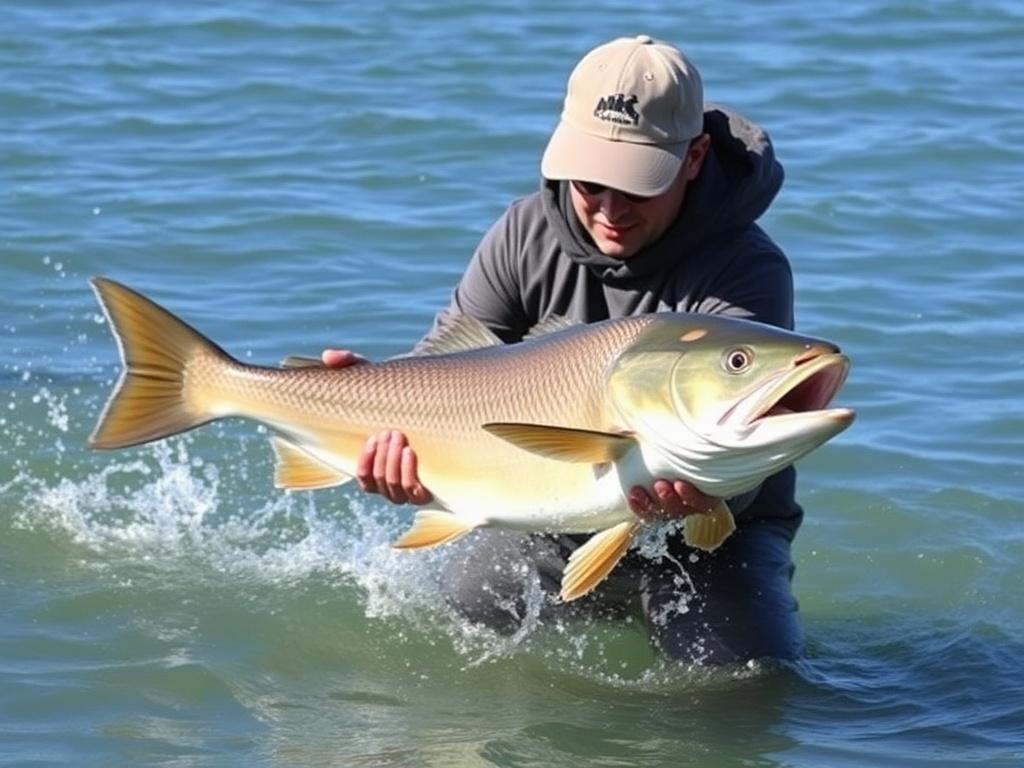
Skill improves with deliberate practice. Here are training drills you can perform on shore, with a buddy, or by yourself, to build the instincts and muscle memory required for big fights.
- Rope runs: Tie a loop at one end of a length of rope. Have a partner hold the loop and run while you maintain steady tension on the rope, practicing drag adjustments and keeping a steady rod angle (use a training rod or broomstick). This simulates fish runs safely.
- Netting practice: Use a partner and an empty net; practice timing your approach, angler positioning, and hoop angles. Simulate head-first entries and slipping attempts until your relay becomes fluid.
- Pump-and-reel drill: Cast a lure (or set a buoy) and practice pumping movements with a weighted hook to simulate resistance. Focus on body mechanics: leg drive, hip rotation, and controlled reeling on the downstroke.
- Drag management timing: Use a tensioned line on a post or tree and practice adjusting the drag under simulated load. Listen and feel for smooth engagement and disengagement.
- Emergency response drill: Practice cutting leader tangles, passing tools, and verbal cues with your boat crew. Time yourselves to build quick, coordinated responses when fish head for a prop or structure.
Training is largely about making good responses automatic. Short, repeated practice sessions yield improvements faster than long but infrequent ones. Keep a log of drills and track progress by noting mistakes and improvements.
Troubleshooting during a fight: broken line, flared hook, or tangled leader
Fights go sideways sometimes. Knowing recovery techniques keeps you in control and prevents escalation. Below are common problems and pragmatic fixes.
Broken line mid-fight
If your mainline breaks and you still have the leader attached, cut the tangled end cleanly and reattach a new line with a secure knot (Albright, FG, or Uni to Uni). If you’ve lost the leader and hook, you may need to tie on a fresh rig. Keep a spool of emergency leader material and a spare hook easily accessible in a rigging kit so you can repair quickly without losing the moment.
Hook pulled or flared — what now?
A flared hook often means it’s time to settle into a longer, gentler fight or to let the fish run and tire itself out. Reduce the drag to allow gradual wear and hope the hook finds a more secure anchor. If the hook pulled completely and the fish is still on, you might need to bite the bullet and strip a new hook or lure onto the fish quickly if possible — a rare circumstance but better prepared for than surprised by.
Leader tangles and snares
Leader tangles are annoying and dangerous during a fight if the fish thins out its leader against structure. If possible, cajole the fish into open water with the boat and then carefully try to tease the leader free using pliers or a long-handled dehooker. If the leader is snagged on structure and the fish cannot be freed, cut the leader as close to the obstacle as possible, adding a visual marker to the area if it’s the line itself in an environmental context.
Safety: protecting yourself and others
Big fish can hurt people. Respect the danger. Keep these safety rules in mind:
- Wear a life jacket when in small boats or in rough conditions. Angler skill stops mattering quickly if you go overboard.
- Wear gloves when handling big or toothy fish, or when cutting lines under load.
- Keep tools accessible: long-nosed pliers, cutters, gloves, and a dehooker should be within arm’s reach.
- Communicate clearly with boat crew or shore partners. One voice for instructions avoids mistakes.
- Beware of hooks swinging free when you’re landing a fish; cut tippets and free any trailing wire carefully.
Having a well-organized boat or pack reduces frantic movements and keeps everyone safer. The combination of PPE (personal protective equipment) and practiced routines is the best prevention against accidents.
Quick-reference cheat sheet: gear and settings table
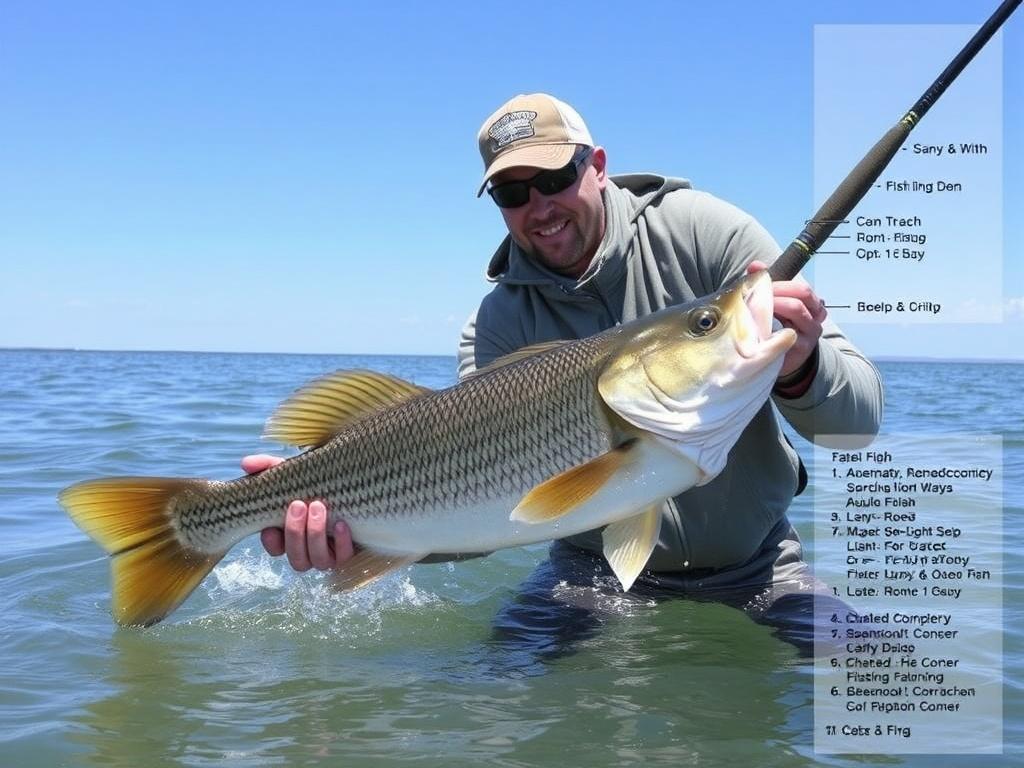
Below is a practical table summarizing recommended rod/reel/line combinations and drag settings for common target weights. Use these as starting points; adjust for local conditions, species, and personal preference.
| Target Fish Weight (approx) | Rod Action & Power | Reel Type | Main Line | Leader | Suggested Drag Setting (% of Line Test) |
|---|---|---|---|---|---|
| Up to 5 lbs (panfish, small trout) | Light, fast | Spinning | 4–8 lb mono/2–6 lb braid | None–4 lb fluoro | 20–30% |
| 5–15 lbs (bass, larger trout) | Light–medium, fast | Spinning or baitcast | 6–12 lb mono / 10–20 lb braid | 6–12 lb fluoro | 25–35% |
| 15–40 lbs (pike, musky (small), small tuna) | Medium–heavy, fast | Baitcaster/Conventional | 20–50 lb braid | 30–60 lb fluoro/wire for toothy fish | 30–40% (higher for braid) |
| 40–150 lbs (large tuna, big catfish, small billfish) | Heavy, fast–moderate | Saltwater conventional | 50–100 lb braid | 80–140 lb fluoro/stainless leader | 35–45% (monitor heat) |
| 150+ lbs (marlin, large pelagics) | Overhead heavy duty | Big-game conventional | 130–300 lb braid/backing | Heavy mono or cable leaders | Varies widely; often run high drag with professional setup |
Checklist before every trip
A short pre-trip checklist saves embarrassment and break-offs. Keep this on your phone or pinned to the boat box.
- Inspect line for frays; replace if necessary.
- Check drag smoothness and set baseline drag.
- Verify all knots and terminal connections.
- Pack appropriate leader materials and spare hooks.
- Bring a net and cutting tools accessible within arm’s reach.
- Wear and check personal safety gear (lifejacket, gloves).
- Review local regulations (hook type restrictions, catch limits, protected species rules).
If you make the checklist a habit, you’ll prevent small oversights that become fight-losing mistakes.
Ethics and conservation: respect the fishery
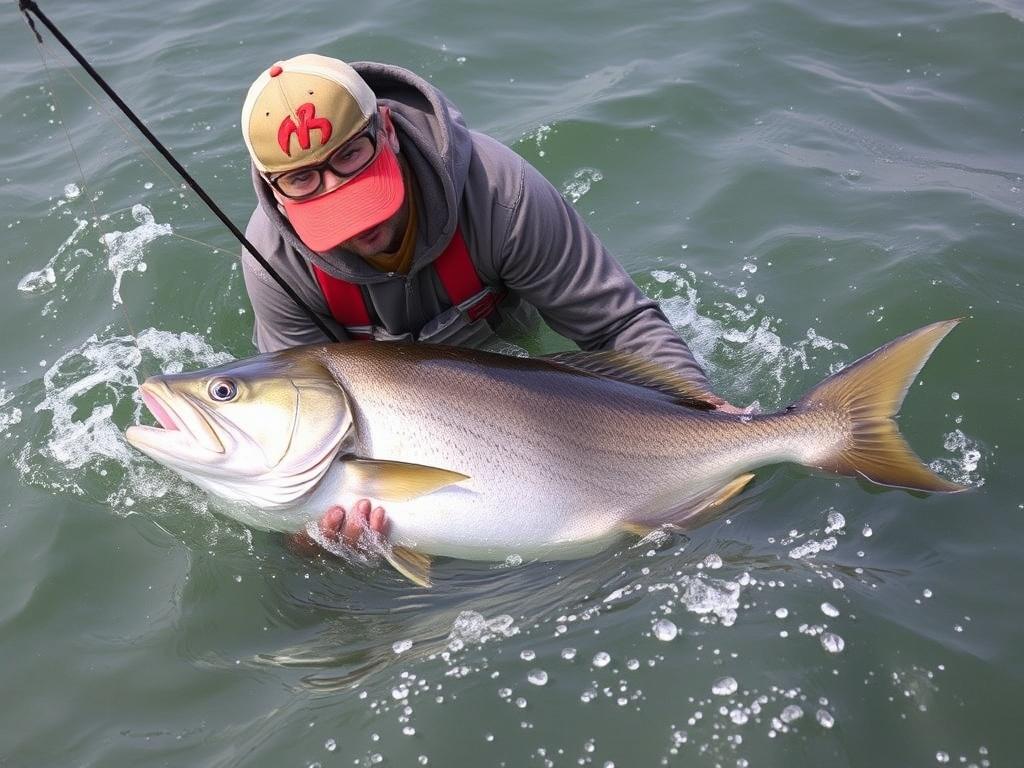
Anglers share a responsibility to protect fish populations. Ethical drillen means practicing methods that minimize harm, obeying seasons and size limits, and reporting any illegal activity that threatens the ecosystem. Be mindful of spawning seasons and sensitive habitats. If you’re uncertain about how a fish was hooked, err on the side of cutting the leader close rather than forcing a deep hook removal that could kill the fish.
Also think about what you bring to the water: minimize lead tackle use where it can be ingested by wildlife, properly dispose of old line and hooks, and adopt non-lead alternatives where possible. A healthy fishery is an angler’s best legacy.
Closing thoughts: patience beats panic
Landing big fish is one of the most thrilling experiences any angler can know. It’s also one of the most humbling. Drillen is not only about muscular contests — it’s about composure, preparation, and respect for your opponent. Nailing the basics — solid gear choices, smooth drag settings, patient technique, and the right landing tools — gives you the highest probability of success.
Above all, practice deliberately, fish ethically, and keep learning. Each fight will teach you something new about your kit, your environment, and your instincts. Make a habit of reviewing what went right and what went wrong after every big fight; that reflection will speed your progress more than any single piece of gear. Tight lines, controlled pressure, and good luck out there — and remember, the best angler is one who lands fish and releases them ready to fight another day.

